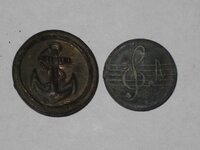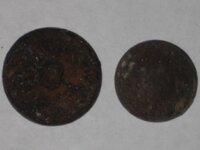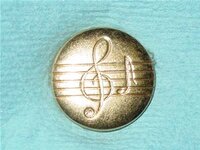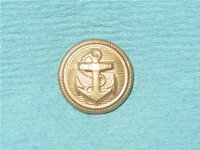tomharris76
Sr. Member
Have found a couple of old buttons at some abandoned house sites. Haven't had any luck finding anything on the internet. The backs have no visible writing left with just a little bit of the shank. The anchor button still has some gilt left on it and the music symbol button appears to be off some sort of band uniform maybe. No idea what they are made out of. Good luck and thanks for helping.








